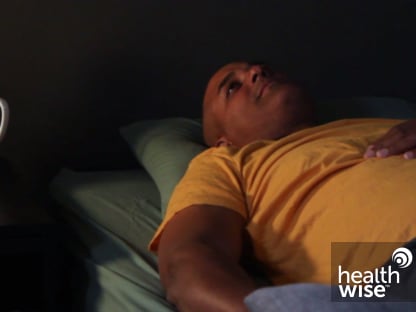Open Gallbladder Surgery for Gallstones
Make an Appointment
Our team is here to help you make an appointment with the specialists that you need.
Open Gallbladder Surgery for Gallstones
Surgery Overview
In open gallbladder surgery (cholecystectomy), the surgeon removes the gallbladder through a single, large cut (incision) in the belly. The surgery usually lasts 1 to 2 hours. You will need general anesthesia. The surgeon will make the incision either under the border of the right rib cage or in the middle of the upper part of the belly (between the belly button and the end of the breastbone).
Doctors do most open gallbladder surgeries after trying first to remove the gallbladder with laparoscopic surgery. A few people have conditions that require open gallbladder surgery.
After surgery to remove the gallbladder, bile flows from the liver (where it is produced) through the common bile duct and into the small intestine. Because the gallbladder is gone, bile no longer is stored between meals. In most people, this has little or no effect on digestion.
What To Expect
Surgery usually involves a hospital stay of 2 to 4 days or longer. Most people can return to their normal activities in 4 to 6 weeks. Open surgery involves more pain afterward and a longer recovery period than laparoscopic surgery.
Try to walk each day. Follow your doctor's instructions for when you can start doing more strenuous activities, such as biking or jogging. You may want to avoid fatty foods for a while. They can cause symptoms like diarrhea or bloating.
Watch
Why It Is Done
Several conditions may lead to surgery to remove the gallbladder. For example, you may need open surgery if you:
- Have severe inflammation of the bile duct or gallbladder.
- Have an inflamed abdominal lining (peritonitis).
- Have high pressure in blood vessels in the liver (portal hypertension). This is caused by cirrhosis of the liver.
- Are in the third trimester of pregnancy.
- Have a major bleeding disorder or use medicines to prevent blood clotting (blood thinners or anticoagulants).
- Have scar tissue from many previous belly surgeries.
- Have abnormal anatomy in the belly.
In 5 to 10 out of 100 laparoscopic gallbladder surgeries in the United States, the surgeon needs to switch to open surgery that requires a larger incision.footnote 1 This can happen when there are problems such as unexpected inflammation, scar tissue, injury, or bleeding.
Learn more
How Well It Works
Surgery reduces the risk that gallstones will come back. But gallstones sometimes form in the bile ducts years after surgery. This isn't common, though.
Risks
The possible complications of open gallbladder surgery include:
- Injury to the common bile duct.
- Bile that leaks into the abdominal cavity.
- Excessive bleeding.
- Infection of the surgical wound.
- Injuries to the liver, intestines, or major blood vessels in the belly.
- Blood clots or pneumonia related to the longer recovery period after open surgery.
- Risks of general anesthesia.
After gallbladder surgery, some people keep having belly symptoms, such as pain, bloating, gas, or diarrhea (postcholecystectomy syndrome).
Credits
Current as of: July 31, 2024
Author: Ignite Healthwise, LLC Staff
Clinical Review Board
All Healthwise education is reviewed by a team that includes physicians, nurses, advanced practitioners, registered dieticians, and other healthcare professionals.
Current as of: July 31, 2024
Author: Ignite Healthwise, LLC Staff
Clinical Review Board
All Healthwise education is reviewed by a team that includes physicians, nurses, advanced practitioners, registered dieticians, and other healthcare professionals.
This information does not replace the advice of a doctor. Ignite Healthwise, LLC, disclaims any warranty or liability for your use of this information. Your use of this information means that you agree to the Terms of Use. Learn how we develop our content.
To learn more about Ignite Healthwise, LLC, visit webmdignite.com.
© 2024-2025 Ignite Healthwise, LLC.
This information does not replace the advice of a doctor. Ignite Healthwise, LLC, disclaims any warranty or liability for your use of this information. Your use of this information means that you agree to the Terms of Use. Learn how we develop our content.






